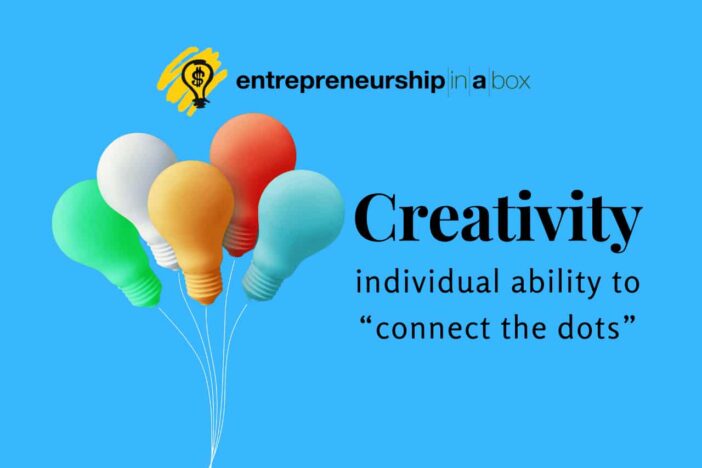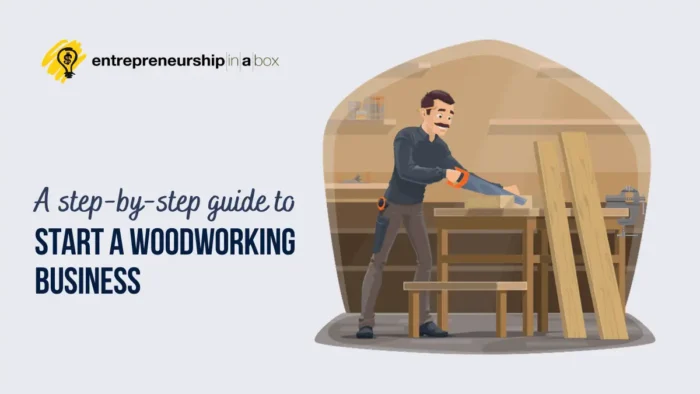This post provides an overview of the academic literature available in the area of entrepreneurial opportunity recognition.
Firstly, the opinions and theories of some respectable members of the academia from this field are discussed and compared. Then some contemporary issues in entrepreneurial models’ design are elaborated upon with one specific scholarly study being given as an example.
In the second part, through an interview with an entrepreneur, some personal insights from a real-life case are provided.
Finally, the post offers an outline comparing theory with the real world.
From both the literature review and the interview findings, a relationship was established, which only partially fits the academic suggestions.
Introduction to Entrepreneurial Opportunity Recognition and Idea Generation
Entrepreneurship nowadays is one of the fastest developing and expanding fields in modern economic settings. Present in every industry and on both corporate and small business levels, entrepreneurs are often regarded by academia as the driving economic force for improvements and expansion.
Even with such recognition, one can argue that there are still insufficient confirmed relationships between recognized modern business theories and the place of entrepreneurship in the economy and organizational strategy. Nevertheless, with both scholars and practitioners increasingly recognizing the importance of this field and related research areas, an aspect receiving the most attention is the opportunity recognition and idea generation process.
Through the related available academic literature, we can see that academic is placing efforts into identifying factors affecting this process and trying to develop a workable design model. The purpose of this essay is to provide a literature review of the readily available academic findings related to the area of process modeling of entrepreneurial opportunity recognition and idea generation.
Related: 4 Steps Business Idea Generation Process in Entrepreneurship
Review of Related Academic Literature
One of the most important issues scholars face in their research from this field is the identification of the right set of variables and circumstances for business success. Pursuant to the somewhat extensive literature related to entrepreneurship, there are a number of theories and concepts from this area that can be considered as confounding with one another. Different scholars have argued their views in relation to almost every aspect of entrepreneurial activities.
Related: Uncovering the Psychologists’ Theories of Motivation: What Drives Human Behavior?
Business Idea Development
De Koning and Muzyka (1999) assert that the term “entrepreneurial opportunity recognition” in relation to how academia utilizes it, can be used to refer to either the discovery of a clear business idea or the development of an idea into a more feasible business concept over time.
The specific area of opportunity identification has been particularly enriched with insights through valuable academics in recent years. Namely, it is through the research findings and contributions of scholars like Shane, Lumpkin, and Gilad that there are several affecting factors identified and modeled accordingly. Even though the joint efforts of the business practitioners and scholars still have not produced a workable universal model, there are a number of framework variables that are being discussed and elaborated upon.
Information Sharing
For example, Okkonen and Suhonen (2010) assert the value of the extent and information sharing of the social network in the opportunity identification process, where further stressed is the importance of entrepreneurial alertness, a recognized prerequisite in many small business textbooks nowadays. In addition to that, there are academics presenting research findings asserting the role of available information from the field in question, or in other words, a better-informed entrepreneur would have bigger chances at recognizing emerging opportunities.
Previous Experience in Opportunity Recognition
Shane (1998) and Wouter (2010) discuss the role of information asymmetry and the importance of the previous field-related experience as part of the entrepreneurial opportunity recognition process. Additionally, what is being discussed in their work is that entrepreneurs will find it easier to identify opportunities in fields where they have previous experience and can analyze important information.
Environment Scanning to Identify Opportunity
The circumstances in which discoveries were identified are important for academics in their efforts to develop the recognition model. More specifically, the stress is placed on the question, whether entrepreneurs undertake planned researches or simply come across information and “connect the dots”, as described by scholars through their cognitive models.
Spontaneous Identification of Opportunity
On the other hand, however, there are researchers arguing that this process takes a more spontaneous form most of the time with the actual entrepreneurs simply identifying the opportunity after they have come across revealing information. Related research goes as far as asserting that business ventures that were started after an opportunity was identified, spontaneously achieve their break-even point faster than the ventures that were started as part of a plan (Klein, 2008).
Networking
In terms of networks, the available academic literature suggests a positive relationship between the size of the network and the possibilities in terms of identifying and generating entrepreneurial ideas in a specific area. Academics argue, to a certain extent, that now all networks provide the same quality and quantity of information. Additionally, as Arsenious and De Clercq (2005) further discuss the network connections, and contacts can additionally be identified and described as strong and weak, with the majority of entrepreneurs having a lot weaker ones.
One of the main advantages of the weak ties, as identified by scholars, is the increased networking provided through which there is a possibility of improved information sharing concerning areas in which an entrepreneur cannot acquire information from the stronger contact ties, like family and close friends.
Further analysis suggests that the type and extent of networks are some of the factors influencing the type of information that reaches the entrepreneur and the extent of entrepreneurial alertness that will be demonstrated on his/her side (Baron and Ensly, 2006). Researchers have placed efforts for introducing the role of creativity as part of the entrepreneurial opportunity recognition process since the 1940s, describing it as a personality trait that the majority did not possess (Schumpeter, 1934).
Creativity
Considering a very much needed characteristic, creativity can be closely related and interpreted through the individual ability of entrepreneurs to “connect the dots” in terms of their tolerance for information ambiguity and ability to recognize emerging patterns.
Even though the above characteristics are among some of the most frequently identified and recognized by scholars in their research for developing the entrepreneurial opportunity recognition model, the actual model has still not been developed.

The main obstacle still exists in the face of the large diversity in terms of circumstances faced by entrepreneurs, opportunity drivers in their industry, and even the individual personality traits of the entrepreneur. It was due to these factors that so far the joint efforts of academia and practitioners have not produced a universal workable opportunity recognition pattern.
In an attempt to provide such a model, or a universally acceptable and applicable pattern, Ardichvili and Cardozo (2000) surveyed eight entrepreneurs with already established businesses and tested the already recognized model variables by academia in that research. The research findings could not establish a positive relationship only with the factor of creativity, while the other factors like alertness, previous industry knowledge, and networks were confirmed as present with the majority of entrepreneurs.
Interview With an Entrepreneur
The entrepreneur I had the chance to interview has extensive experience in the hotel and restaurant sector, which is a part of the larger hospitality industry. In a short time, I had been available to make a live interview. I acquired a better insight into the reality faced by today’s entrepreneurs. I also believe that I developed a better understanding of the psychological development process of entrepreneurs and the trigger factors that ultimately push them into pursuing opportunities and being proactive.
Motivational Factors to Start a Business
For the person who agreed to the interview, one of the main motivations to start her own business was the notion of working long years for other people and not having much to show for at the end of the day. She acquired enough experience, and becomes more and more qualified, but felt underappreciated. In addition to that, with her experience, she was in a better position to recognize certain changes in terms of customer satisfaction, tastes, and preferences.
Another factor contributing to her proactiveness was her two young children. What she wanted to provide for them in an environment where proactiveness, forward-thinking, and risk tolerance were not unknown terms. She believes that with her actions, an example will be set for her children to follow in their future and perhaps learn some lessons in life sooner than their parents.
Opportunity Recognition and Creation
Some of the environmental settings that contributed to the creation of this opportunity are part of the current global economic crisis. Namely, what the entrepreneur noted and was realistic enough to recognize was the emerging trends of a large number of customers preferring lower pricing of products and services.
Another factor that helped this opportunity become more easily identifiable and accessible was the fact that the current participants in the local restaurant sector did not pay any attention to the complaints of these people, managers were not proactive enough to come down on the customer service level and engage a direct a contact. So, one of the things that were in favor of the entrepreneur was the narrow – mindless of the managers and their lack of appreciation for the customer and general market feedback.
As stated in the interview, to keep the low-cost business model running, only family members were involved in the restaurant management. The other reason why initially only family members were involved was the expected flow of communication, as that was recognized as an important aspect of organizational management. In terms of the idea generation, the entire process and to place in academic terms, the “connecting of dots” was done by the entrepreneur, through information gathering from the environment.
Real-Life Case VS Scholar Research Related to Opportunity Recognition
In relation to academia and scholarly research, there is only one aspect of the opportunity recognition model that can be identified in the real-life case analyzed through the interview. The factor of previous knowledge and experience related to the industry is the obvious one with the entrepreneur having more than 25 years of practical knowledge in the specific sector.
What makes this case perhaps a unique one is the absence of some of the more established opportunity recognition model variables as recognized by scholars. In this particular case, the entrepreneur did not touch on the topic of entrepreneurial alertness, and the discovery was obviously not achieved after purposeful market research.
The restaurant was managed internally, where the children helped in the operation facilitation, and the company was opened on the initiative of an individual, where she does not mention any specific networks of business partners. In this aspect, a business network can be the customers she communicated with that led to them revealing how they felt about the prices. More specifically, these people would fit the description of the so-called “loose ties”, which as discussed by researchers, are much more than the closer ties, with family and friends.
Conclusions Related to Opportunity Recognition Research
As a rapidly developing field of economics, entrepreneurship is considered one of the biggest economic drivers for improvements and expansion. With academia and industry experts increasingly recognizing the role and importance of future developments in this field, efforts are being made towards establishing entrepreneurial activity and perception models. Such models would help provide better insights and facilitate the entrepreneurial processes in the future. So far, academia has somewhat agreed and established upon several aspects or factors of the entrepreneurial opportunity identification and discovery process. However, due to the lack of uniformity and standardization in this process, a universally acceptable and applicable model has not been developed so far.
The interview conducted with the entrepreneur provided valuable insights into the findings of this post, which somewhat contradicted the general findings of the academia. Although the findings from the interview cannot be generalized, they did not match the majority of already established academic criteria related to the opportunity recognition process. As small-scale research, this only further implies the diversity of circumstances and a variety of factors that can influence this entrepreneurial process.
References
Ardichvili, A. & Cardozo, R.N. (2000) A model of the entrepreneurial opportunity recognition process. Journal of Enterprising Culture, 8(2), 103-119.
Arenius, P. & De Clercq, D. (2005) A Network-based Approach to Opportunity Recognition. Small Business Economics, 24(6), 249-265.
Baron, R.A. (2006) Opportunity recognition as pattern recognition: How Entrepreneurs “connect the dots” to Identify New Business Opportunities. Academy of Management Perspectives.
Baron, R.A. & Ensley, M.D. (2006) Opportunity Recognition as Detection of Meaningful: Evidence from Comparisons of Novice and Experienced Entrepreneurs. Management Science, 52(9), 1331-1344.
De Koning, A., and Muzyka, D. (1999) Conceptualizing Opportunity Recognition as a Sociocognitive Process. Research paper. Centre for Advanced Studies in Leadership, Stockholm, Sweden.
Klein, P.G. (2008) Opportunity discovery, entrepreneurial action, and economic organization. Strategic Entrepreneurship Journal, 2(14), 175-190.
Okkonen, L., and Suhonen, N. (2010) Business models of hearing entrepreneurship in Finland. Energy Policy, 38(7), p.3443-3452.
Shumpeter, J. (1934) Capitalism, Socialism, and Democracy. New York: Harper and Row.
Wouter, S. (2010) Industry event participation and Network Brokerage. Journal of Management Studies. 47(4), p.635-653.
This is a guest post by Aleksandar Delev, Ba in Marketing, Sheffield, UK.





